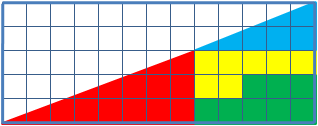The Missing square puzzle problem is a good illustration. It illustrates a simple and universal problem/question/solution process, where "some illusion" causes complications.
There are a self-evident problem — the 1×1 hole in that arises on the second figure —, but the solution is evident only after we know (like an Egg of Columbus)... All people, experts and non-experts, agree that there is a problem.

normal user: thinks that "there are two equivalent figures, the 'total triangles' in a perfect 13×5 grid...", following with the question:
problem
Y: "Why does the second equivalent triangle have a hole in it?".expert user: think something like "oops, they are similar, but not 'perfectly equivalent' figures", following with the question:
problem
X: "How to show that they are not perfect equivalents?".
The clever geometry-expert thinks in terms of "similar geometries that aren't perfect equivalents".
The normal user thinks, mistakenly, in terms of exact congruence. So, the use of wrong hypothesis, produce ill Y questions.
The "XY problem" as a specialization of the "wrong hypothesis behaviour"
You want to solve the real question-X, and you think in terms of an Y-context, and try to use question-Y. Instead of asking about context X, you ask about context Y.
(as @Gnome noticed above, but using other words)
So, "XY Problem" is only another (more specialized) term to say "Use of wrong working hypothesis".
